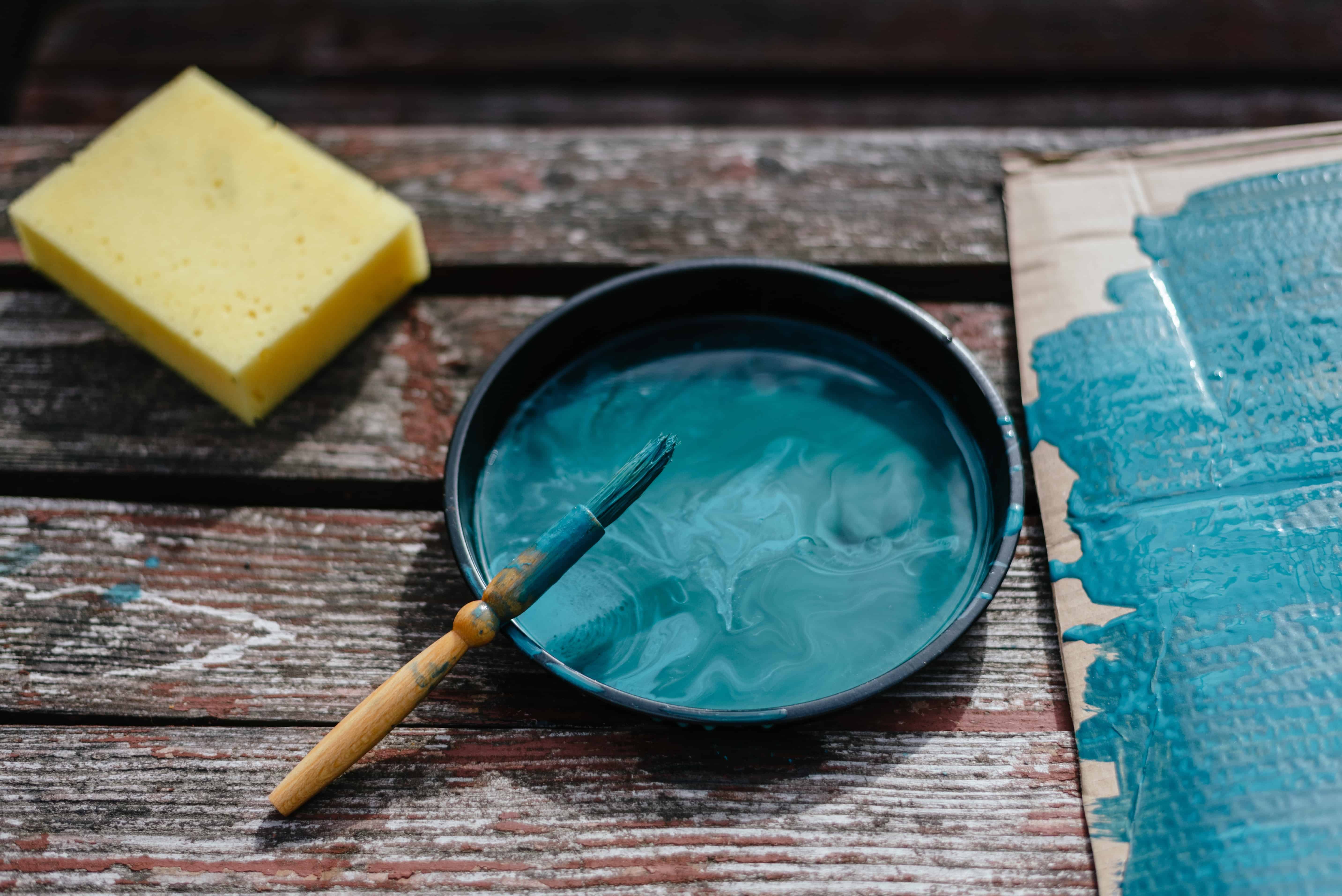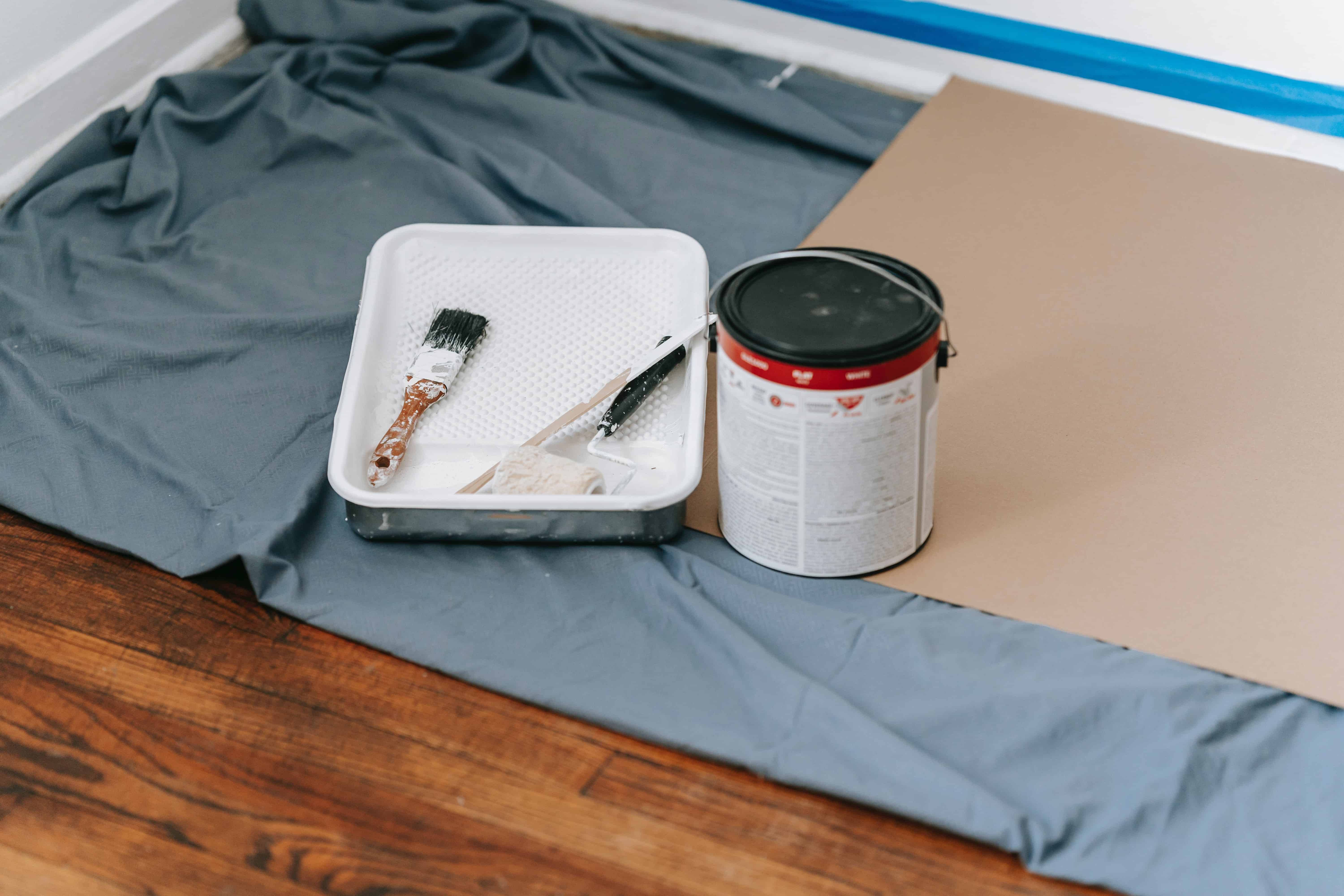Spot the Difference: How to Tell if Paint is Oil or Latex
If you're an avid DIYer or a professional painter, there's no doubt that you've come across oil and latex paints. But how can you tell which is which? As a paint expert with over 10 years of experience in the field, I'm here to help! Knowing the difference between oil and latex paints will save time, money, and hassle - so let’s get started learning about these two types of paint.
The first thing to understand is the major differences between oil-based and latex-based paints: Oil-based paints are more durable than their water-based counterparts and tend to have better coverage; they also take longer to dry. Conversely, latex-based paints are easier to apply and clean up, but they don't last as long as oil-based products.
Now that we know some basics about these two types of paint, it’s time to learn how to tell them apart. Read on for my top tips for identifying whether your next painting project requires oil or latex paint!
Basic Differences Between Oil And Latex Paints
Oil and latex paints are both popular choices for painting projects but there are a few key differences between them. Oil-based paint is often favored for its fade resistance, high durability, and water resistance compared to latex paint. While oil-based paints can be used on wood, metal, glass, and other surfaces, they require a different application method that includes mineral spirits or turpentine as a part of the process. Latex paints have become increasingly popular due to their quick drying time, easy cleanup with soap and water, and low odors when compared to oil-based paints. They also provide an excellent choice for interior walls because of their ability to resist fading over time. Knowing these basic differences between oil and latex paint can help you choose the right one for your project's needs. Characteristics of oil-based paint will vary depending on what surface it is being applied to so it’s important to understand how each type interacts with specific materials before beginning your project.
Characteristics Of Oil-Based Paint

Oil-based paint is known for its long-lasting color and durability. It also gives a high gloss finish that will last a lifetime, making it an ideal choice for anyone looking to add some extra shine to their walls or furniture. Oil-based paints are solvent-based, meaning they contain volatile organic compounds (VOCs), which can be hazardous when inhaled in large amounts.
When considering oil-based paint over latex, there are several characteristics you should look out for:
- Color Durability: Oil-based paints offer superior protection from fading compared to latex paints as the colors tend to remain vibrant longer.
- High Gloss Finish: An added benefit of using oil-based paints is the glossy sheen surface that creates a luxurious, sophisticated look.
- Solvent-Based Paint: Since this type of paint contains VOCs, special care must be taken when applying and storing it. Make sure your work area is well-ventilated and gloves are worn at all times while handling the product.
- Easy Clean-Up: One of the many benefits of oil-based paint is how easy it is to clean up after use. Simply wipe away any excess with warm water and soap before painting again.
- Long-Lasting Quality: Unlike latex paint that tends to chip or peel off easily, oil-based paints provide much better coverage due to their thicker consistency, ensuring your project looks great for years to come.
Given these advantages, it’s no wonder why so many people opt for oil-based paint when decorating their homes! However, keep in mind that although this type of paint has its advantages and may seem like the obvious choice; there could still be alternative options depending on what kind of result you're trying to achieve - such as latex paint - which we'll discuss next.
Characteristics Of Latex Paint
Latex paint is one of the most popular paints to use in any painting project. Its latex-based, water-soluble, and semi-glossy finish makes it an ideal choice for both indoor and outdoor surfaces. Its long-lasting color retention ensures that your walls or trim look great even after many years. Plus, this type of paint is easy to clean up with soap and water. One of the best features of latex paint is its low VOCs (Volatile Organic Compounds), which makes it safer for you as well as for the environment.
Latex also dries quickly allowing you to complete a project faster than other types of paints.
All these attributes make latex paint perfect for interior and exterior projects alike. With all these benefits, it’s no wonder why so many people choose latex paint over other varieties available on the market today. To determine if your paint is oil or latex based, inspecting the can label is your next step.
Inspecting The Can Label

Inspecting the paint can label is an important step in determining whether a particular type of paint is oil or latex. It's essential to check the product label and look for key terms that indicate what kind of paint it is. Oil-based paints will typically have ‘alkyd’, ‘oil’, or some other indication on the container label as part of their name. On the other hand, water-based paints are more likely to be labeled with words like ‘latex’ or ‘acrylic’ on their labels. If there isn't enough information on the label to decide, then you may need to resort to testing the paint with water.
When performing a can label inspection, it's also important to read any additional instructions provided by the manufacturer. These could include safety warnings or tips about how best to apply and store the paint after purchase. Additionally, if there are symbols or codes printed on the container label, take note because these might offer further clues about what kind of paint it is.
Overall, taking time to inspect the can label before purchasing a type of paint should provide helpful insight into its composition and intended use. This way you'll know exactly what sort of project you're getting yourself into – and which products you will need – when you start painting!
Testing The Paint With Water
Now that you know what to look for on the can label, it's time to get up close and personal with your paint. The next step in determining if the paint is oil-based or latex is conducting a water test. This will help give you insight into how resistant the paint is against liquids like water and other solvents.
Water Test | Results | Effectiveness |
|---|---|---|
Water-Based Test | Paint turns milky white when mixed with water. | 85% - 90% accurate |
Water-Soluble Test | Paint visibly dissolves when mixed with water. | 95%-100% accurate |
Water Repellent Test | No effect; no change in color of the paint when mixed with water. | 100% accurate |
Conducting a simple “water resistance” test will not only tell you whether the paint is oil or latex but also its overall quality as well. To do this, mix a small amount of each sample of paint with an equal amount of room-temperature tap water in separate containers until it forms a paste consistency. If the mixture stays relatively clear, then it suggests that the paint has good liquid repellency properties which could be indicative of high-quality latex paints having more than 50 percent acrylic resin content while poor-quality paints tend to dissolve quickly upon contact with water.
If however, after mixing them, they turn cloudy and whitish then chances are that the majority composition contains some form of calcium carbonate or clay which would indicate an oil-based product such as alkyd resins used mostly by professionals due to their durability and superior performance characteristics compared to latex products. It's important to note that any slight changes resulting from these tests should be taken into account before making any final purchase decisions! Now let's move on to applying a solvent to further test our paint samples...
Applying A Solvent To Test The Paint
The oil-latex test is a great way to determine what type of paint you're working with. This involves applying a specific solvent to the surface and seeing how it reacts. If the paint dissolves, then it's an oil-based paint; if not, it's latex. To begin the testing process, select either an oil-paint solvent or a latex-paint solvent depending on which kind of paint you think you have.

Once you've chosen your solvent, apply a small amount to an inconspicuous area of the painted surface using a cotton swab or brush. Let it sit for about five minutes and observe how it interacts with the paint—if it dissolves into the material, then you’re dealing with an oil-based product. Otherwise, if there’s no reaction after five minutes, then you probably have latex paint.
It’s important to remember that this is only a basic guide and may not always provide accurate results. For more reliable information regarding your painting project, consider reaching out to professional testing services that can accurately identify different types of paints and finishes.
Professional Testing Services
If you're having trouble identifying whether a particular paint is oil or latex, professional testing services are available to help. They can accurately determine the type of paint and provide detailed reports that explain their findings. Oil testing and latex-testing involve different methods and technologies, but both rely on experienced personnel who know how to identify paint correctly.
At a minimum, a good paint test should include an analysis of the surface condition before any tests are performed. This helps to ensure accuracy by ensuring all samples have been taken from the same area of the wall or other painting surface. Once this has been done, various materials such as solvents and spectroscopes may be used to identify what kind of paint it is with 100% certainty. The results will then be compared against known characteristics for each type of paint to make an accurate determination.
Professional testing services are often tailored toward specific projects, depending on your needs. Whether it's for residential or commercial applications, they'll use the most appropriate techniques to get you reliable results quickly so you can move forward with confidence.
Before choosing a service provider, always ask questions about their process so you can feel secure knowing you're getting top-quality assurance when it comes to identifying paints!
Conclusion
As a paint specialist, I know that it’s important to have the right knowledge in determining if your project requires oil or latex-based paints. While there are some distinctions between the two types of paint, they both can be used effectively depending on the job at hand.
The best way to tell which type of paint you need is to look at the label and inspect any existing coatings with water and/or a solvent. If all else fails, professional testing services exist for those who aren't able to determine what kind of paint they're dealing with. Ultimately, having an understanding of how to identify oil vs. latex paints will help ensure you get the results you desire from your next painting project.
Do you feel confident about being able to differentiate between oil and latex paints? With the information provided here, you should now possess the necessary skillset for making an informed decision when selecting your next set of colors!






